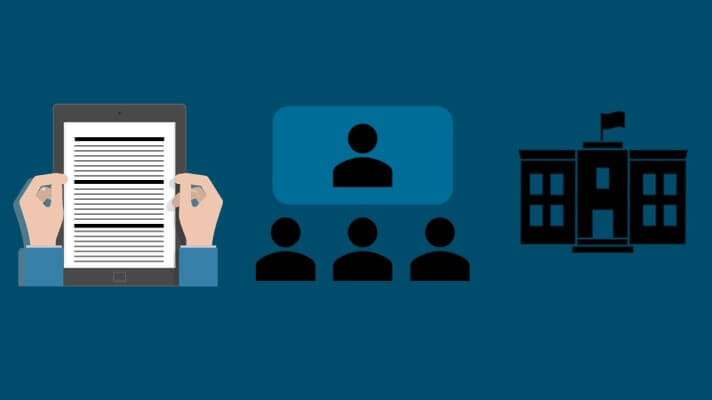On September 16th the National Development and Reform Commission (NDRC), whom are responsible for the implementation of the Chinese Corporate Social Credit System, released a statement that it has completed its first credit evaluation of 33 million Chinese businesses. This marks the next phase in the implementation of the Corporate Social Credit System.
The Chinese Social Credit system has achieved wide media attention both nationally as well as globally. While most of the media coverage is focused on the individual social credit rating, the Chinese Social Credit System has three distinct but equally important targets, namely (1) individuals residing in China, (2) businesses operating in China and (3) the Chinese government itself.
Whereas the implementation of the individual social credit system still has a long way to be developed (and no national social credit score for individuals exists), the corporate social credit system is already in an advanced development stage, with the Chinese government aiming to have a fully operational system by the end of 2020.
The reasoning behind the Corporate Social Credit System
In our previous article, we highlighted that at first the aim of the Chinese Social Credit System was to support the development of the market economy, where it was impossible to assess an individual or company’s credit worthiness. However, the system developed over time to create a system to increase compliance with laws and regulations by including aspects of trustworthiness and sincerity. This development is captured excellently in the thinking of Wu Weihai (a key member of the NDRC):
“Markets are made up of individuals. And a person’s willingness to fulfill their financial obligations cannot be separated from their willingness to fulfill their personal obligations. As such, the trustworthiness of an individual cannot be separated from the trustworthiness of a society as a whole.”
Therefore, a main goal of the Corporate Social Credit System is to create a self-regulating market. With the new Foreign Investment Law coming into effect in 2020 and the loosening of the market entry access regulations, the government wants to enforce regulation and ensure the quality of the companies active in its domestic market from the inside. By monitoring and rating companies, the good companies will enjoy perks, whereas business will be extremely hard for bad companies.
The system rates both Chinese and foreign companies and will have far reaching consequences. Companies will be classified on a scale ranging from excellent to poor, affecting the way to do business. Where an excellent rating can yield rewards, a poor rating can severely hamper day-to-day business. With full implementation of the system imminent, it is essential for all companies to understand how the system works and prepare their business to fulfill all requirements to receive a good rating, or at the very least, avoid a bad rating or non-compliance record. In this article we will examine the structure and mechanisms underlying the Corporate Social Credit System to give a better picture of how the system is supposed to work.
How does the Corporate Social Credit System work?
The Chinese Corporate Social Credit System assesses businesses based on a set of ratings and compliance records. For the most part, the Corporate Social Credit System is an instrument to implement and enforce existing and upcoming market regulation.
Here the Chinese government first defines the requirements that companies need to comply with (via legislation) in order to receive a good rating. Secondly, the behavior of companies is monitored by the collection of data, both through self-reporting and through new technologies. Lastly, the former two are combined into an algorithm to create a rating and assess compliance. Subsequently, this rating is used to determine whether a company will receive rewards (good rating/compliance) or sanctions should be put in place (bad rating/non-compliance).
As such, the Corporate Social Credit System consists out of three different aspects which are interconnected:
- A master database – containing a host of records on company behavior.
- The blacklisting and corporate credit rating system – measuring compliance with the defined requirements.
- A mechanism of punishments and rewards.
How is Compliance and the Corporate Rating defined?
The majority of government regulations and laws published since 2013 have been explicitly linked to the Corporate Social Credit System, via a clause that states that non-compliance with respective regulations is recorded in a database. Most of these regulations very clearly and explicitly formulate what is considered compliance (or ‘good’ behavior). Again, this means that the Corporate Social Credit System largely focuses on compliance with existing regulation, rather than going beyond regulatory compliance.
However, the challenge arises because there is no centralized database containing all the requirements set out in existing legislation. This information is actually dispersed across various government documents which are independently distributed by various government authorities. The consequence for businesses is that getting the full picture and achieving regulatory compliance is very time consuming and exhaustive.
The Corporate Social Credit System effectively uses two methods in parallel to categorize the behavior of businesses:
- Compliance Records: the Chinese authorities are attempting to fully integrate all company compliance records into a centralized system. In cases of serious non-compliance, businesses will be blacklisted by the respective government authority. The aim is to aggregate all this information into one system to create an overall assessment of a company on a national level.
- Scale Ratings: all relevant government authorities will have their own scale ratings based on a letter scale (A-D) or a numerical scale (0-1,000 points). These authorities set out a detailed list with requirements, and based on these requirements companies will receive a scale rating. Subsequently, based on these ratings all companies will receive a rating in one of the four categories (excellent, good, medium and poor).
Since all the underlying requirements are published by the relevant government authorities, companies can identify what must be done to obtain a good rating.
How does the Chinese government get the relevant data?
In order to effectively realize the implementation of the Corporate Social Credit System, the Chinese government needs a lot of data. This is not necessarily a problem as the Chinese government already has an abundance of data, but these are spread across hundreds of unconnected databases from tens of government authorities with poor communication between them.
For this reason, the Chinese government is currently pushing to get all existing data into one centralized database. This database has already been created and is called “the National Credit Information Sharing Platform” (NCISP – in other words, the master database). The NCISP already contains data submitted by provincial and local governments, state agencies and the central bank. As of August 1, 2019, a total of 46 government authorities cooperate to uphold this database, and many of them will incorporate their data into the list.
Interestingly, 80% of datasets in the NCISP relate to companies rather than individuals. And a total of 75% of the data is open to the public. In 2019, a document released more information on the type of data that will be incorporated into this master database. This information includes among others:
- Basic Company Registration Data;
- Equity Structure (incl. shareholders);
- Designated Registered Personnel (Legal Rep, GM etc.);
- Annual Reports;
- Tax, Social Security and Housing Fund information;
- Records of Administrative Penalties;
- Records of Blacklisting;
The data which is included in the master database is derived from the following sources:
- Records derived from the government via regular administrative processes.
- Government data derived from inspection.
- Self-reported company data.
Moreover, the government will likely work with third-party data inputs of private companies such as Alibaba and Tencent. These companies sit on vast amounts of data on the reliability of companies and individuals. Alibaba is well known for its Sesame Credit rating for individuals, but it also uses a rating service for companies. Collaborations with these private players are likely to play a big part in the full design of the Credit System. Another digital data source, the most controversial one, is the usage of video surveillance. The government is working together with VisionVera, a video equipment company, to implement video surveillance to digitize certain government inspection processes and to remotely monitor visible company activities.
Conclusion
To generate company specific ratings, the system uses an algorithm which analyses the data collected in combination with a set of requirements by the government. Whereas the compliance records are used either to impact these ratings or directly result in a blacklisting. We will dive deeper into the consequences of how these ratings and blacklisting affects companies in our next article.
Even though the Chinese government already collects a plentiful of data on both domestic and foreign companies, a comprehensive database of the current scale is unprecedented. Since the Corporate Social Credit System will heavily affect companies in China, it is essential for companies to start getting acquainted with the system and start preparing to become fully compliant.
If you have any questions about China’s Corporate Social Credit System and how this may affect your company, please do not hesitate to contact us at [email protected] or check out our dedicated Corporate Social Credit System Services page.
Our China Corporate Social Credit System Series
Part 1 The underlying structure and mechanisms
Part 2 How do the ratings and blacklisting work?
Part 3 Consequences for businesses (punishments & rewards)



